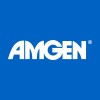
Benefits of Adapted Physical Activity for Chronic Osteoarticular Pain in Patients With Multiple...
Multiple MyelomaAdapted Physical Activity1 morePain is one of the most frequent symptoms leading patients to consult a doctor, particularly in rheumatology and cancerology. When it becomes chronic, pain is the cause of a major emotional and physical invasion, with harmful repercussions on the family, social and professional levels. It is therefore necessary to be able to propose different therapies. For many years, non-medicinal techniques have been proving their benefits and their central role in the treatment of chronic pain. Physical activity has been widely demonstrated in the literature to have considerable physical benefits (reduced risk of hypertension, vascular accidents, diabetes, improved bone condition, weight control, etc.) but also psychological benefits. However, according to the WHO, nearly 31% of adults aged 15 and over were not physically active in 2008. Physical inactivity is considered the 4th leading risk factor for death in the world. It is estimated to be the main cause of 21 to 25% of breast and colon cancers. The investigators therefore propose a feasibility study, interventional, with minimal risks and constraints, evaluating the effectiveness of adapted physical activity in chronic pain related to a pathology little studied in this field of management: multiple myeloma. This study will include about 15 patients with residual pain 3 months after the end of their induction chemotherapy treatment. Adapted Physical Activity sessions will be performed for 12 weeks. The evaluation of the expected benefits on pain and its consequences (cognitive, emotional, behavioral, physical ...) will be done through simple and validated questionnaires as well as on the evolution of the consumption of analgesics. The expected duration of the study will be one year.

Cost-Utility Analysis of Home-based Versus Hospital-based Chemotherapy in Multiple Myeloma: Case...
Multiple MyelomaCarfilzomib is administered in treatment of Multiple Myeloma intravenously on two consecutive days, each week for three weeks (days 1, 2, 8, 9, 15, and 16), followed by a 12-day rest period (days 17 to 28). With COVID pandemic, the investigators had to limit patient visits to the hospital. The treatment protocols were modified by switching to weekly injections of carfilzomib according to the PLEIADES and ARROW 2 studies. Considering the frequency of intravenous (IV) administration, home-based chemotherapy in Hospital-at-Home (HaH) setting is an attractive and suitable alternative to standard hospital-based chemotherapy in Outpatient-Hospital (OH), and is expected to provide both cost-savings for the Health Insurance (HI) and improvement in patient quality of life (QoL). The purpose of the study is to assess the cost-utility of home-based compared to hospital-based carfilzomib administration in multiple myeloma. The investigators are also planning on assessing healthcare resource utilization and related costs, adverse and intercurrent events, and patients' quality of life and satisfaction, for each strategy.

Lenalidomide Discontinuation Study
Multiple MyelomaCancer1 moreAn interventional, non-randomised study to assess the risk of progression after discontinuation of maintenance therapy in sustained MRD negative complete remission by flow cytometry MM patients without high-risk features who have completed at least two years of maintenance therapy with lenalidomide or who have discontinued lenalidomide maintenance due to side effects. The primary endpoint is to assess the rates of sustained MRD negativity by NGF in the bone marrow at 12 months after discontinuation of maintenance therapy.

Study of Ibrutinib in Combination With Pomalidomide and Dexamethasone in Subjects With Relapsed/Refractory...
Multiple MyelomaPhase 1 is an open-label, dose finding, multicenter study of ibrutinib in combination with pomalidomide and dexamethasone in subjects with relapsed/refractory multiple myeloma. Phase 2b is a randomized, double-blind, multicenter study of ibrutinib or placebo, in combination with pomalidomide and dexamethasone in subjects with relapsed/refractory multiple myeloma.

Study of Lenalidomide and Dexamethasone With or Without Pembrolizumab (MK-3475) in Participants...
Multiple MyelomaThe purpose of this study is to compare the efficacy of lenalidomide and low dose dexamethasone with pembrolizumab (MK-3475) to that of lenalidomide and low dose dexamethasone without pembrolizumab in terms of progression-free survival (PFS) in participants with newly diagnosed and treatment-naïve multiple myeloma who are ineligible for autologous stem cell transplant (Auto-SCT). The study's primary hypothesis is that pembrolizumab in dexamethasone prolongs progression free survival (PFS) as assessed by Clinical Adjudication Committee (CAC) blinded central review using International Myeloma Working Group (IMWG) response criteria compared to treatment combination with lenalidomide and low-dose with lenalidomide and low-dose dexamethasone (standard of care, SOC) alone.

A Trial Evaluating Efficacy & Safety of RVD +/- Panobinostat in Transplant Eligible, Newly Diagnosed...
Multiple MyelomaThis was a multicenter, open-label, randomized phase II study which were to enroll 112 newly diagnosed symptomatic multiple myeloma patients in a 1:1 fashion. Patients were to enroll at approximately 20 centers in the United States. Patients were to undergo stem cell mobilization with plerixafor plus Granulocyte Colony Stimulating Factor (G-CSF), according to investigator discretion, after 4 cycles of induction therapy. Study treatment interruption for stem cell collection were not to exceed 30 days. All patients were to receive one additional cycle of study treatment after stem cell collection and then proceed to autologous transplant using melphalan 200mg/m2(140mg/m2 for patients > 70 years), as conditioning. After Autologus Stem Cell Transplant( ASCT), patients still on study were to initiate maintenance therapy within the 60-120 day period following ASCT, provided they have adequate blood count and clinical recovery. Patients in the RVD arm were to initiate maintenance therapy with lenalidomide alone, and patients in RVD-panobinostat arm were to receive lenalidomide + panobinostat maintenance. Lenalidomide were to be dosed orally at 10mg/day continuously in both arms, increasing to 15mg/day after the first 84 day cycle. Panobinostat were to be dosed at 10mg three times a week, every other week. Total planned duration of maintenance therapy were to be 3 years. Patients were to remain on study treatment until they complete the maintenance phase, or until they experience disease progression, unacceptable toxicity, or at the discretion of the Investigator.

Enhancing Anti--Tetanus Vaccine Response After Autologous Stem Cell Transplantation
Plasma Cell MyelomaThis pilot randomized Phase II trial (10 subjects per arm) will compare immune reconstitution following transplantation of an autologous mobilized graft product to reconstitution following transplantation of a mobilized graft product followed by an autologous lymphocyte infusion collected prior to G-CSF mobilization. All subjects will receive tetanus vaccines pre and post-transplant. The primary end point will be tetanus vaccine immune responses post-transplant.

APRIL CAR T Cells (AUTO2) Targeting BCMA and TACI for the Treatment of Multiple Myeloma
Multiple MyelomaThe purpose of this study is to test the safety and efficacy of AUTO2, a CAR T Cell Treatment Targeting BCMA and TACI, in Patients with Relapsed or Refractory Multiple Myeloma.

A Study to Assess AMG 701 Montherapy, or in Combination With Pomalidomide, With or Without, Dexamethasone...
Relapsed/Refractory Multiple MyelomaThe primary purpose of the phase 1 part of the study is to evaluate safety and tolerability of AMG 701 monotherapy to identify the RP2D for AMG 701 monotherapy followed by a dose-confirmation part to gather further safety data for AMG 701 monotherapy at the RP2D in adult subjects with relapsed/refractory multiple myeloma (RRMM). In addition, this study will include a sequential dose exploration part to identify the RP2D of AMG 701 in combination with pomalidomide, with and without dexamethasone (AMG 701-P+/-d). Phase 2 will consist of the dose-expansion part to gain further efficacy and safety experience with AMG 701 monotherapy in adult subjects with RRMM.

Nivolumab Role in the Treatment of Patients With Refractory or Relapse Multiple Myeloma
Multiple MyelomaThis is an open-label, non-randomized Phase 1 study evaluating the role of two regimens: A) Nivolumab in combination with Pomalidomide and low dose dexamethasone and B) Nivolumab + Elotuzumab + Pomalidomide + dexamethasone in the treatment of relapse or refractory multiple myeloma patients. The study will be performed in 10 sites in Spain. First, the MTD for the Nivo-Pom-Dex combination will be determined using a 3+3 scheme. Once the MTD has been determined both Regimes (A and B) will be open for full accrual and patients will be included in an alternating way in both regimes simultaneously. In the case that an unacceptable toxicity was seen in the Lead-in phase (Nivolumab + Pomalidomide + low dose dexamethasone), the other phase would not be open. A safety analysis by an internal review committee will be performed once the first six patients included in the regimen B have completed the first two cycles. The main purpose of the study is to analyze the proportion of subjects, with refractory or relapsed multiple myeloma, receiving the combination Nivo-Pom-dex or Nivo-Pom-dex-Elo experience one or more haematological and non haematological SAE (grade 3 or higher). Additionally, other Research Hypothesis: The combination of nivolumab with pomalidomide and dexamethasone will demonstrate adequate safety and tolerability to permit further testing of these combinations in subjects with multiple myeloma. The addition of elotuzumab to nivolumab, pomalidomide and dexamethasone will not change the safety profile. Duration of Study: The study will remain open for enrolment for 15 months (estimated), or until the planned total number of 40 subjects is reached if this happens first. The follow-up of the last recruited patient will be up to 3 years, being the Final analyses performed 1,5 years after the last patient is included. Study Population: Male and female adult patients with Multiple Myeloma in first or subsequent relapses, previously exposed to both a proteasome inhibitor and a IMID (Lenalidomide). Patients may be exposed, relapsed or refractory to Lenalidomide.
